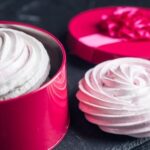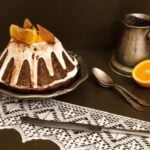Are you wondering how do you make fondant cake decorations to elevate your baking skills? Fondant is a versatile and popular choice for creating stunning cake decorations. From intricate designs to simple shapes, fondant allows for endless creativity in decorating cakes for any occasion. In this article, we will explore the art of making fondant cake decorations, including the tools and techniques needed to master this skill.
Fondant is a type of icing that can be rolled out into a smooth sheet and draped over a cake for a flawless, professional look. It is commonly used to create decorative elements such as flowers, ribbons, and figures that add an elegant touch to cakes. Its pliability makes it easy to mold into various shapes and designs, making it a favorite among bakers and pastry chefs for its ability to bring artistic visions to life.
To get started with making fondant cake decorations, you will need some essential tools and materials. From rolling pins and cutters to shaping tools and food coloring, having the right equipment at your disposal will make the process much smoother.
Understanding the different types of fondant available – whether store-bought or homemade – is also crucial in achieving the desired results. Throughout this article, we will delve into each aspect of working with fondant to help you create beautiful edible works of art for your cakes.
Tools and Materials Needed for Making Fondant Cake Decorations
When it comes to making fondant cake decorations, having the right tools and materials is essential. Whether you’re a beginner or an experienced baker, ensuring that you have everything you need will make the process much smoother and more enjoyable. Here are some of the essential tools and materials you’ll need to create stunning fondant cake decorations:
1. Fondant: Of course, the most important ingredient for making fondant decorations is the fondant itself. You can choose to make your own fondant at home using simple ingredients like confectioners’ sugar, gelatin, and corn syrup, or you can opt for store-bought fondant which is readily available in a variety of colors.
2. Rolling Pin: A good quality rolling pin is a must-have for rolling out your fondant to the desired thickness. Look for a non-stick or silicone rolling pin to make the process easier.
3. Fondant Cutters: These come in all shapes and sizes and are essential for cutting out precise shapes from your rolled out fondant. From basic circles and squares to intricate designs, having a selection of cutters will give you endless possibilities for your decorations.
4. Modeling Tools: These tools are essential for shaping and detailing your fondant decorations. They often include various shaping tips, embossing tools, and fine detailing tools to help bring your creations to life.
5. Edible Glue or Water: To adhere your fondant decorations to your cake or to attach different pieces of fondant together, edible glue or water will be necessary.
By ensuring that you have these essential tools and materials on hand, you’ll be well-equipped to tackle any fondant cake decoration project with confidence.
| Tools and Materials | Description |
|---|---|
| Fondant | The main ingredient for making fondant decorations |
| Rolling Pin | Used for rolling out the fondant |
| Fondant Cutters | Essential for cutting out precise shapes from rolled-out fondants |
Choosing the Right Fondant
Homemade fondant offers the benefit of being customizable to your desired flavor and color. You have complete control over the ingredients used, allowing you to achieve a truly unique and personalized result. Additionally, making fondant from scratch can be a cost-effective option for those who plan on using large quantities or need a specific color that may not be readily available in stores.
On the other hand, store-bought fondant provides convenience and consistency. It is readily available at most baking supply stores and online retailers, saving you time and effort in preparing the fondant from scratch. Store-bought fondant also tends to have a longer shelf life than homemade versions, making it a practical choice for occasional bakers or those who prefer to have pre-made decorations on hand.
Ultimately, the choice between homemade and store-bought fondant comes down to your individual needs and preferences. If you value customization and enjoy experimenting with flavors and colors, homemade fondant may be the best option for you. However, if convenience and consistency are more important factors for your cake decorating projects, store-bought fondant may be the better choice.
Step-by-Step Guide
To make basic fondant shapes and figures for your cake decorations, you will need a few essential tools and materials. Below is a step-by-step guide on how to create these simple yet impressive decorations.
Tools and Materials Needed
- Fondant (homemade or store-bought)
- Rolling pin
- Cornstarch or powdered sugar for dusting
- Cookie cutters of various shapes and sizes
- Fondant modeling tools or toothpicks
- Food coloring (optional)
- Edible glue or water
Step 1: Prepare the Fondant
Start by kneading your fondant until it becomes soft and pliable. If you are using store-bought fondant, it may be a bit stiff at first, so kneading it will help to make it more workable.
Step 2: Roll Out the Fondant
Dust your work surface with cornstarch or powdered sugar to prevent the fondant from sticking. Use a rolling pin to roll out the fondant to your desired thickness. For basic shapes, aim for a thickness of about 1/8 inch.
Step 3: Cut Out Your Shapes
Use cookie cutters to cut out your desired shapes from the rolled-out fondant. If you don’t have cookie cutters, use a sharp knife to carefully cut out shapes freehand.
Step 4: Add Details (Optional)
If you want to add details such as lines or texture, use fondant modeling tools or toothpicks to gently press into the fondant shapes.
These basic steps will give you a good foundation for creating fondant decorations for your cakes. With practice and patience, you can start creating more elaborate figures and designs using advanced techniques like molding, sculpting, and texturing.
Advanced Fondant Techniques
Molding fondant involves shaping it into three-dimensional objects, such as animals, people, or objects. To mold fondant, you will need tools such as sculpting tools, veining tools, and silicone molds. These tools help you achieve precise details and realistic textures in your fondant creations. Whether you are making a realistic rose or a cute animal figurine, learning how to properly mold fondant is essential for bringing your designs to life.
Sculpting with fondant allows you to create custom cake toppers and unique decorations that showcase your artistic abilities. This advanced technique requires practice and patience, as it involves shaping the fondant by hand to create intricate details and shapes. Sculpting tools, dowels, and wire can be used to add support and structure to your fondant sculptures. With sculpting techniques, the possibilities are endless – from whimsical characters to elegant wedding cake toppers.
Texturing fondant adds depth and visual interest to your cake decorations. By using embossing mats, texture sheets, or even everyday items like toothpicks and straws, you can create patterns and textures on the surface of the fondant. Texturing can be used for creating backgrounds, adding dimension to flowers and leaves, or giving a unique finish to themed cake designs.
Mastering advanced fondant techniques takes time and dedication but the results can be truly stunning. With practice and the right tools at your disposal how do you make fondant cake decorations reaching professional-level quality is achievable.
Tips and Tricks for Working With Fondant
Working with fondant can be a fun and creative way to decorate your cakes, but it also requires some skill and know-how to achieve a professional finish. In this section, we will cover some tips and tricks for working with fondant, including preventing cracking, smoothing edges, and adding details to your fondant cake decorations.
Preventing Cracking
One of the common challenges when working with fondant is preventing it from cracking. To avoid this, make sure your fondant is at the right consistency – not too dry or too wet. Knead the fondant well before you start working with it to make it more pliable.
When rolling out the fondant, use a light dusting of powdered sugar or cornstarch to prevent sticking. If you notice cracks starting to form, you can gently smooth them out with your fingertips or a small amount of shortening.
Smoothing Edges
Achieving smooth edges on your fondant decorations is crucial for a professional look. To ensure clean edges, use a sharp knife or pizza cutter to trim excess fondant once it’s placed on the cake. You can also use a fondant smoother tool to gently press and smooth the surface of the fondant without leaving any marks.
Adding Details
Adding intricate details like patterns, textures, and embossed designs can elevate your fondant decorations. For embossing patterns onto fondant, you can use specialized embossing tools or even everyday items like lace doilies or textured fabric. To add small details like flowers or figurines, use food-safe sculpting tools and molds for precise shaping.
Mastering these tips and tricks will help you create flawless fondant cake decorations that are sure to impress your friends and family at any special occasion.
Coloring and Flavoring Fondant for Unique Cake Decorations
Adding color and flavor to fondant can take your cake decorations to the next level. Whether you’re looking to match a specific theme or simply want to add some extra pizzazz, there are various ways to achieve the perfect look and taste for your fondant creations.
When it comes to coloring fondant, you can either purchase pre-colored fondant or color it yourself using gel food coloring. To get the desired shade, start by adding a small amount of coloring and knead it into the fondant. Add more color as needed until you reach the perfect hue. Keep in mind that darker colors may require more coloring and can also affect the consistency of the fondant, so be sure to adjust accordingly.
In terms of flavoring, store-bought fondant usually comes in a standard vanilla flavor, but you can easily enhance it with extracts or flavor oils. Simply add a few drops of your chosen flavoring while kneading the fondant until it is well incorporated. Some popular options include almond, lemon, raspberry, and chocolate. Homemade fondant also offers flexibility when it comes to flavoring, allowing you to customize the taste according to your preference.
Experimenting with different colors and flavors can truly elevate your cake decorations, making them not only visually stunning but also delicious. The possibilities are endless when it comes to creating unique and personalized designs that will leave a lasting impression on anyone who sees (and tastes) your stunning creations.
By taking the time to master coloring and flavoring techniques, you can unleash your creativity and bring a whole new dimension to your fondant cake decorations. Whether you’re aiming for bold and vibrant colors or subtle pastel hues, as well as tasty variations like citrus-infused or chocolate-flavored fondant – there’s no limit to what you can achieve with some imagination and experimentation.
Inspiration and Ideas for Using Fondant Decorations on Different Types of Cakes
When it comes to decorating cakes with fondant, the possibilities are truly endless. With its versatile nature, fondant can be used to create stunning decorations for all kinds of cakes, from simple birthday cakes to elaborate wedding masterpieces. Whether you’re a beginner or an experienced baker, here are some inspiration and ideas for using fondant decorations on different types of cakes.
Simple Birthday Cakes
For a child’s birthday or a casual celebration, fondant decorations can add a touch of fun and whimsy to a simple cake. Use brightly colored fondant to create playful shapes like balloons, animals, or cartoon characters. You can also use letter cutters to spell out the birthday person’s name or age for a personalized touch. The key is to keep the designs uncomplicated and cheerful.
Wedding Cakes
When it comes to wedding cakes, fondant decorations can elevate the elegance and sophistication of the design. From delicate lace patterns and intricate flowers to ornate monograms and metallic accents, there are countless ways to use fondant to create stunning details that will wow guests at any wedding reception.
Holiday Cakes
Whether it’s Christmas, Halloween, Easter, or any other holiday, fondant decorations can add festive flair to your cakes. Create snowflakes and snowmen for winter-themed cakes, pumpkins and ghosts for Halloween treats, or bunnies and eggs for Easter desserts. Using themed cookie cutters or silicone molds can make creating these seasonal decorations a breeze.
By experimenting with different colors, shapes, and designs, you can unleash your creativity and bring your cake decorating skills to new heights with fondant. No matter the occasion, making fondant cake decorations allows you to personalize your creations in exciting ways that will surely impress your friends and family.
Conclusion
In conclusion, fondant cake decorations can add a beautiful and professional touch to any homemade or store-bought cake. Whether you are a beginner or an experienced baker, mastering the art of working with fondant can open up endless possibilities for creativity and customization. From basic shapes to advanced sculpting and texturing techniques, there are many ways to elevate your cake decorating skills with fondant.
When it comes to making fondant cake decorations, it is important to have the right tools and materials on hand. Investing in quality equipment such as rolling pins, cutters, and shaping tools can make the process smoother and more enjoyable. Additionally, choosing the right fondant – whether it’s store-bought or homemade – can also have a significant impact on the outcome of your decorations.
For those who are new to working with fondant, it’s essential to practice patience and be open to learning from mistakes. Fondant can be finicky at times, but with the right techniques and tips for preventing cracking and smoothing edges, you’ll soon be creating stunning cake decorations that will impress friends and family alike.
Experimenting with different colors and flavors can also make your creations stand out and add a personalized touch to your cakes. With dedication and practice, anyone can master the art of fondant cake decorations.
In summary, mastering the art of fondant cake decorations takes time, patience, and practice. Whether you are looking to create simple shapes or intricate designs, working with fondant allows for endless possibilities when it comes to customizing cakes for any occasion. So why not give it a try? With the right tools, techniques, and inspiration, you can take your cake decorating skills to new heights with fondant.
Frequently Asked Questions
How to Make Fondant Decorations?
Making fondant decorations requires a few key steps. First, prepare the fondant by kneading it until smooth and pliable. Then, add color as needed. Next, roll out the fondant and use cookie cutters, molds, or hand-cut shapes to create the desired decorations.
How Far in Advance Can I Make Fondant Decorations?
Fondant decorations can be made in advance and stored for several weeks if kept in an airtight container in a cool, dark place. It’s best to make them at least a few days before you need them to allow time for any drying and setting.
What Do You Need to Make Fondant Figures?
To make fondant figures, you’ll need fondant in the desired colors, a rolling pin, small shaping tools or toothpicks for details, and cornstarch or powdered sugar for dusting surfaces. It’s also helpful to have templates or reference images to guide the shaping process.

Welcome to my blog about home and family. This blog is a place where I will share my thoughts, ideas, and experiences related to these important topics. I am a stay-at-home mom with two young children. I hope you enjoy reading it! and may find some helpful tips and ideas that will make your home and family life even better!





